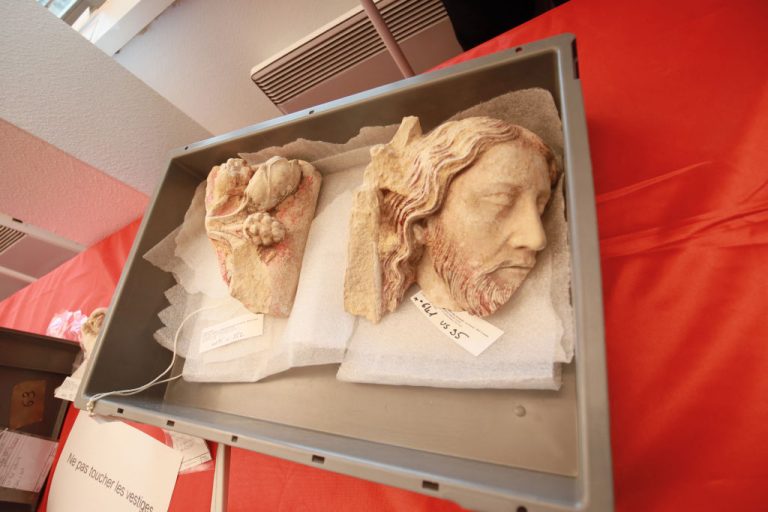After a fire nearly destroyed the Notre Dame Cathedral in Paris, archaeologists during the five-year renovation and reconstruction process had a rare opportunity to dig beneath the building’s structure and uncovered fragments of more than 1,000 historical artifacts. .
It is incredible that this famous cathedral was dug out before the fire. However, under France’s Preventive Archeology Law, archaeologists now have the opportunity to “carry out detection and scientific research on archaeological remains (on land and underwater) that might otherwise be destroyed by land development work.” The process ends in 2022 Starting in February of this year.
Team from national institute for preventive archeology (National Institute for Preventive Archaeology), which included a team led by Christophe Besnier, was initially given only five weeks to excavate under Notre Dame’s stone floor, but was later allowed to excavate 16 inches under the floor Shallow, to the same depth as the scaffolding foundation.
“The remains are much richer than expected,” Besnier told reporters. national geographic.
Experts have discovered as many as 1,035 pieces of art, as well as 100 graves, bringing the total number of tombs in the cathedral to more than 500. Many of the coffins, along with scattered bones, remain unidentified.
The lead sarcophagus, possibly belonging to the poet Joachim du Bellay, is one of the most famous tombs.
Life-size heads and torsos of limestone statues, including a statue of Christ, were also unearthed. A 13th-century chancel screen, which once separated the choir and sanctuary from public view, is one of the more significant architectural finds.
Researchers also gained a better understanding of how medieval craftsmen originally built Notre Dame. The study of charred beams, for example, can give us more insight into the climate at the time.
Medieval carpenters used an oak tree approximately 100 years old, approximately 49 feet long, and shaped it with a Doloval axe. Rope found in the woods allowed logs to be tied together for transport across the Seine.
The extensive use of iron clamps to tie the stones together further illuminates the building process. The oldest clamps, approximately 10 to 20 inches long, date from the cathedral’s construction in the 1160s, making Notre Dame the first Gothic cathedral to use iron as a building material. In addition, stone-cutting techniques can be seen along the rock face, and reuse of materials is found in the second roof above the 13th-century choir.
The previously invisible pillars in the cathedral’s foundation were connected by long beams to spread the weight of the building. A complete analysis of Notre Dame will not only help document what was going on there, but also help further the identification of medieval artifacts, such as the large rose-coloured stained glass windows in the cathedral’s transepts.
Notre Dame officially reopened to the public on Sunday, December 8.


